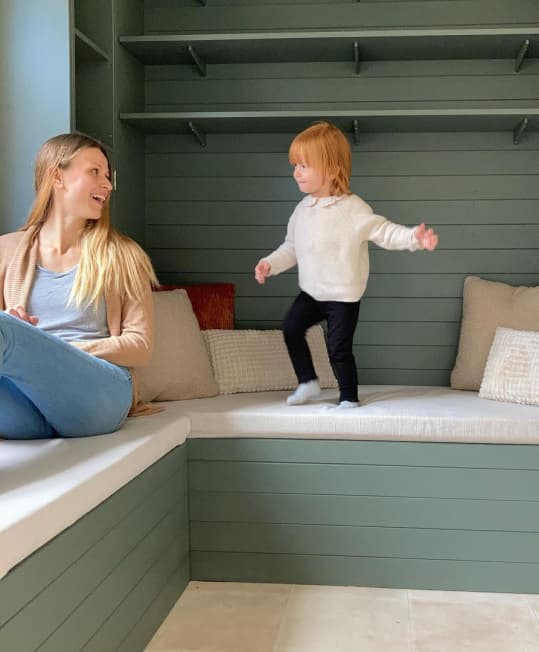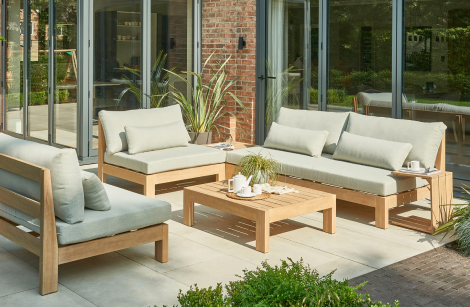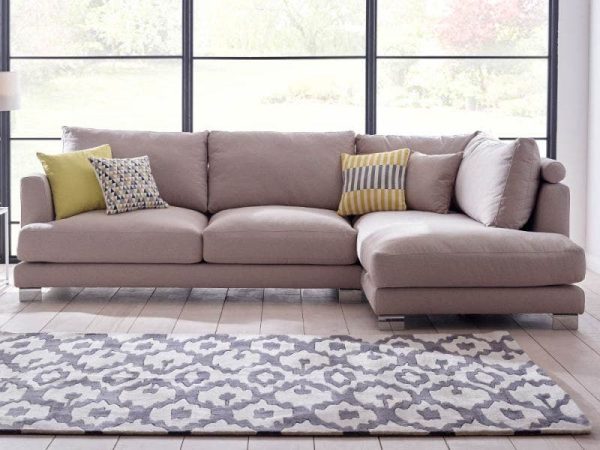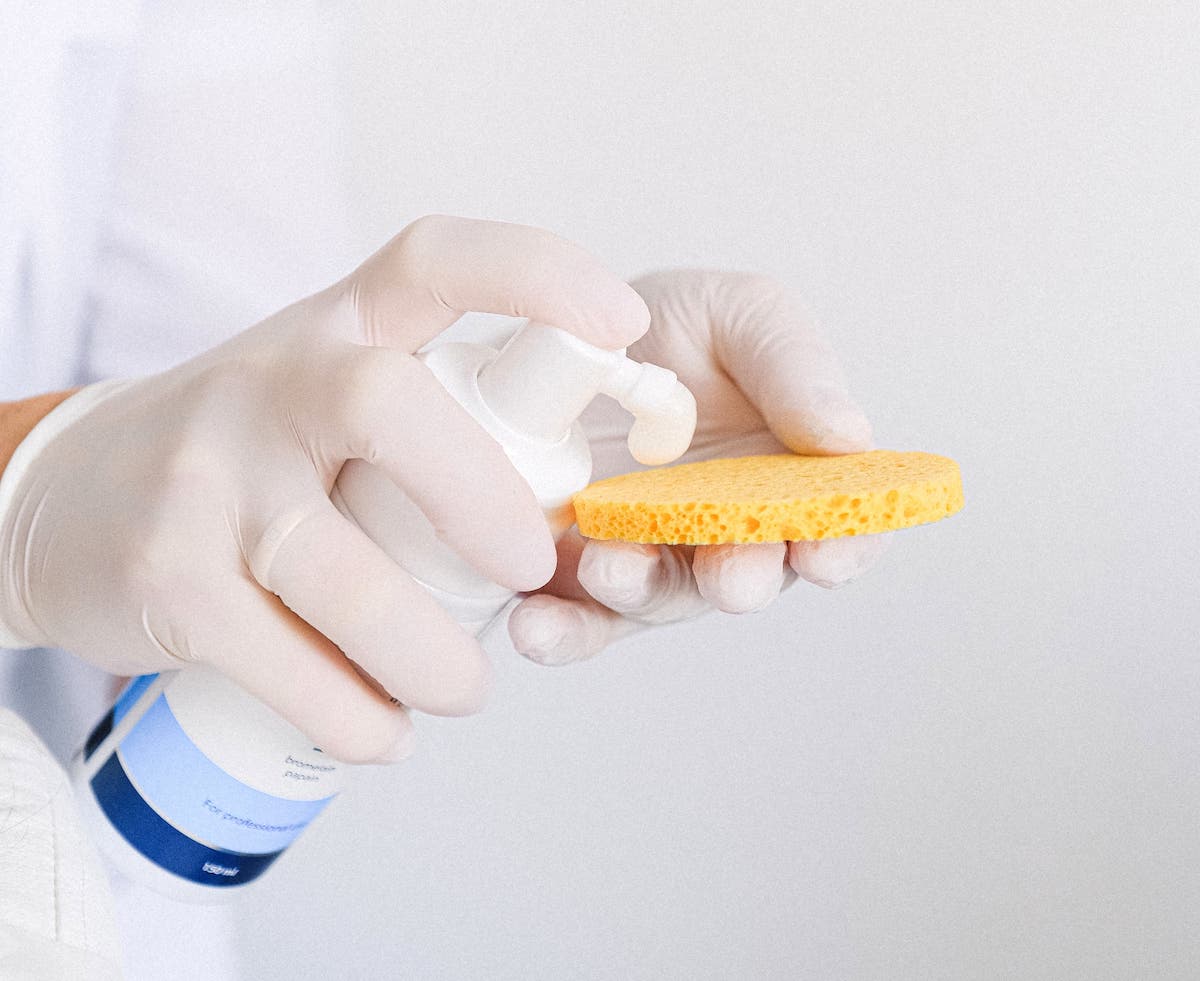When choosing a sofa, durability, comfort, and aesthetics are essential considerations. A key factor influencing these qualities is the type of foam used. The foam determines the sofa’s level of support, comfort, and lifespan. Understanding the different types of foam and their functions can help you make an informed decision, whether you’re purchasing a new sofa or refurbishing an old one.
The Importance of Foam in Sofas
Foam is the core material inside sofa cushions that provides support and comfort. A high-quality foam ensures the sofa remains inviting and functional for years. The foam’s performance depends on several factors, including its density, firmness, resilience, and durability. Selecting the right foam, and getting foam cut-to-size, means finding a balance between these properties to suit your needs and preferences.
Factors to consider
Density
Foam density is measured in pounds per cubic foot (PCF). Higher density typically means greater durability and support, though it may also come at a higher cost.
Firmness
This is determined by the foam’s Indentation Load Deflection (ILD) rating. Softer foams have lower ILD ratings, while firmer foams have higher ratings.
Resilience
Resilience measures how bouncy or springy the foam feels. High-resilience foam tends to last longer and provides consistent comfort.
Durability
Some foams are more resistant to wear and tear, making them suitable for heavy usage.
Cost
Balancing quality and budget are essential, as higher-quality foams are often more expensive but provide better long-term value.
High-Density Foam
High-density foam is a top choice for sofa cushions due to its excellent support and durability. It has a density of 2.0 PCF or higher, making it resistant to sagging and deformation over time. The firmness can vary, providing options for those who prefer a soft, medium, or firm seat.
Best For:
- Everyday use
- People who need extra support, such as those with back issues.
Pros:
- Long-lasting and durable.
- Excellent support for prolonged sitting.
- Maintains shape well.
Cons:
- Can feel too firm for those who prefer a softer seat.
- Higher cost compared to lower-density foams.
High-Resilience Foam
High-resilience (HR) foam is prized for its superior bounce and comfort. With densities ranging from 2.5 to 3.0 PCF, it offers exceptional durability and responsiveness. This foam quickly regains its shape after compression, making it ideal for frequently used sofas.
Best For:
- Premium-quality sofas.
- Users who want a balance of softness and support.
Pros:
- Extremely durable and resistant to sagging.
- Comfortable and supportive.
- Maintains its form even after years of use.
Cons:
- More expensive than standard high-density foam.

Memory Foam
Memory foam, renowned for its contouring capabilities, delivers a luxurious seating experience by adapting to body heat and pressure to conform to the user’s shape. Commonly utilised as a top layer rather than a core material, it enhances sofa cushions with a plush and inviting feel.
Best For:
- People who prioritise comfort over firmness.
- Sofas used for lounging or napping.
Pros:
- Excellent pressure relief.
- Soft and cozy.
- Ideal for relaxing and unwinding.
Cons:
- Retains heat, which may not be ideal for warmer climates.
- Can feel too soft for those needing firm support.
- More expensive than traditional foams.
Polyurethane Foam
Polyurethane foam is one of the most common foams used in sofas. It comes in various densities and firmness levels, making it a versatile option. It’s lightweight, affordable, and widely available.
Best For:
- Budget-friendly sofas.
- Sofas in low-traffic areas.
Pros:
- Affordable and accessible.
- Customisable in terms of density and firmness.
- Lightweight and easy to handle.
Cons:
- Less durable than high-density or HR foam.
- Prone to sagging over time with heavy use.
Latex Foam
Latex foam is derived from natural or synthetic rubber, offering excellent resilience and durability. It’s hypoallergenic, resistant to dust mites, and has a natural bounce. Latex foam provides a unique combination of firmness and comfort.
Best For:
- Eco-conscious consumers.
- Those seeking an alternative to synthetic foams.
Pros:
- Eco-friendly and sustainable (in the case of natural latex).
- Long-lasting and resistant to sagging.
- Naturally breathable and temperature-regulating.
Cons:
- High cost.
- Limited availability in some regions.
Feather or Down Wrapped Foam
This type combines foam cores with a feather or down wrapping. The foam provides structure and support, while the feather layer adds a soft, luxurious feel. It’s commonly used in high-end sofas.
Best For:
- Sofas with a plush, premium look and feel.
- Users who want a mix of support and softness.
Pros:
- Luxurious and comfortable.
- Provides a combination of support and plushness.
Cons:
- Requires frequent fluffing to maintain shape.
- More expensive and higher maintenance.

Reticulated Foam
Reticulated foam has an open-cell structure that allows air and water to flow freely. It’s primarily used for outdoor sofas due to its quick-drying properties.
Best For:
- Outdoor sofas and patio furniture.
Pros:
- Highly breathable and moisture resistant.
- Ideal for outdoor use.
Cons:
- Less comfortable than traditional indoor foams.
Selecting the Right Foam for Your Sofa
Choosing the best foam for your sofa depends on several factors:
Usage:
Determine how frequently the sofa will be used. High-traffic sofas benefit from high-density or HR foam, while low-traffic pieces can make do with polyurethane foam.
Budget:
High-quality foams like HR or latex may require a higher upfront investment but save money in the long run due to their durability.
Comfort Preferences:
If you prefer a soft and plush feel, memory foam or down-wrapped foam is a great choice. For a firmer, more supportive seat, high-density or latex foam works better.
Aesthetic and Maintenance:
Feather-wrapped foams require more upkeep to maintain their appearance, while polyurethane foams are low-maintenance.
Environment:
For outdoor furniture, reticulated foam is the clear winner due to its water-resistant properties.
Conclusion
Choosing the right foam for your sofa is essential for ensuring comfort, durability, and satisfaction. High-density foam and high-resilience foam offer excellent support and longevity, while memory foam and feather-wrapped options provide luxurious comfort. For eco-conscious choices, latex foam stands out, and for outdoor use, reticulated foam is unbeatable. Ultimately, the best foam for your sofa depends on your specific needs, preferences, and budget. Investing in the right foam will ensure your sofa remains a centerpiece of comfort and style in your home for years to come.





